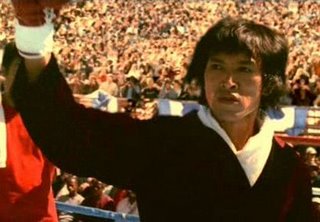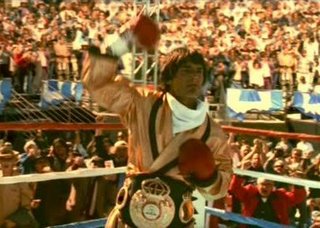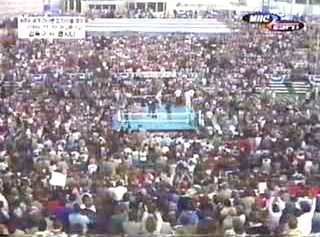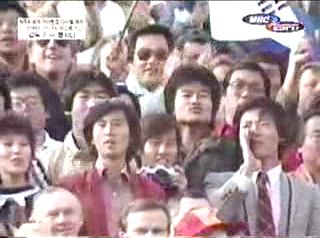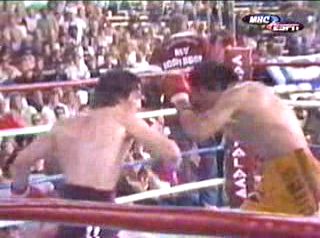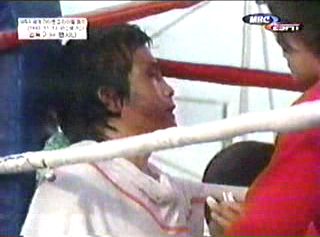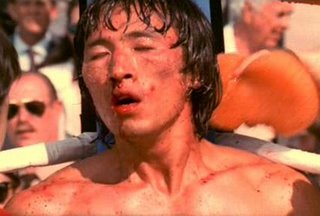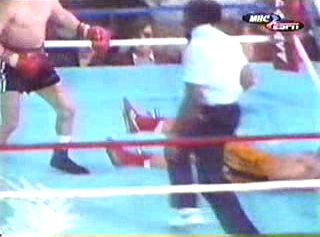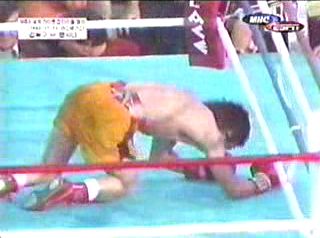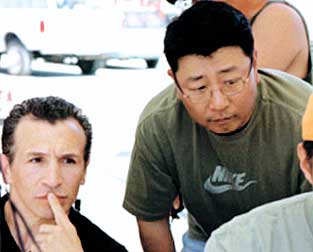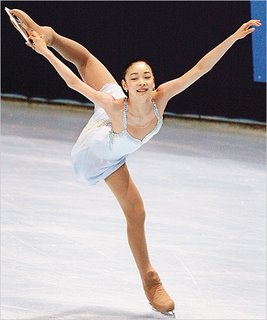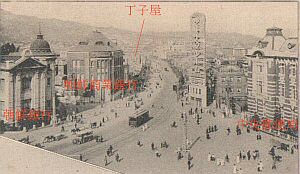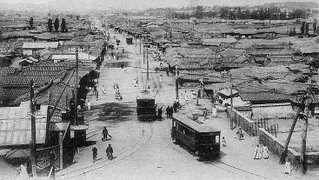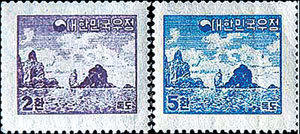The Japan-Russia war; an illustrated history of the war in the Far East, the greatest conflict of modern times, by Sydney Tyler. Philadelphia, P. W. Ziegler co. [c1905] can be found here.
The Russo-Japanese war; a photographic and descriptive review of the great conflict in the Far East, gathered from the reports, records, cable despatches, photographs, etc., etc., of Collier's war correspondents: Richard Harding Davis, Frederick Palmer, James F. J. Archibald, Robert L. Dunn, Ellis Ashmead Bartlett, James H. Hare, Henry James Whigham, Victor K. Bulla.
New York, P. F. Collier & son, 1905, can be found here.
These books are available as scanned images, but also can be read as text (generated via OCR, but it's pretty faithful to the source). The latter book is filled with images, however, so it's well worth looking at for its photos. A timeline of the conflict can be read here [dead link; just head to Wikipedia].
I'm intending to do another post[s, as it turned out] about the foreign correspondents who covered the war (Jack London and Robert Dunn, especially) and the Japanese army, its efficiency, and its march through northern Korea. For now I'm just going to look at, as the title above puts it, the Invasion of Korea.
-----
That war would break out between Japan and Russia was, by early 1904, a bygone conclusion, so much so that foreign newspapers began sending correspondents to Japan in early January. On January 23, Korea declared its neutrality. Russia and Japan's need to send troops into Korea was due to other reasons besides their desire to control Korea, as Sydney Tyler explains:
Within the triangle of which Harbin is the apex, of which the [rail] lines to Port Arthur and Vladivostock are sides, and of which the course of the Yalu River is the base, the sphere of immediate military operations practically had to be confined, as the icebound condition of the coast to the west of Port Arthur made a landing in force there impossible till the spring. The necessity of maintaining communications tied the Russian forces very largely to the railway lines. But for either belligerent the helpless kingdom of Korea, which lies south of a line drawn between Port Arthur and Vladivostock, for aggressive operations, afforded the most convenient line of advance. Through Korea Russia could menace Japan, and through Korea Japan could most easily march against Port Arthur. Naturally, therefore, Russia's first care was to mass her available troops on the line of the Yalu, and concentrate reinforcements at Harbin ready to be moved to whatever point might prove the objective of the Japanese attack.
Map from the Colliers book.
But the command of the sea was the essential condition to attack by land by either combatant. With the Russian fleet masked or destroyed, Japan could choose as a landing-place for her armies any of the numerous ports on the western coast of Korea, and so approach in force the Yalu River, which divides Korea from Manchuria and the Liao-tung Peninsula. With imperfect command of the sea, Japan would have a second resource. She could land her troops at Masampo, separated only by a hundred miles of sea from her own ports, or she could, at a push, land her forces on the east coast of Korea, at Yuen San or Gensan.Thus the importance of the first naval battles. The best known of the early battles, Japan's surprise attack on the Russian fleet at Port Arthur (just after midnight on Febrary 9), was actually preceded by a smaller, mid-afternoon engagement on Febrary 8 near the Korean port of Chemulpo (present day Incheon), when the Russian gunboat Korietz exchanged fire with the Japanese squadron which had approached the harbour. The Korietz quickly retreated back to harbour, and, along with the larger cruiser Variag, had no choice but to watch as the Japanese began landing troops nearby just after 6pm.
Japanese troops at Chemulpo
As Tyler continues:
The Japanese took no further notice of the Russian ships until the disembarkation of their troops had been carried out, a process which was commenced immediately and was carried out through the night with great celerity and in the most perfect order. [...] This force belonged to the 12th Infantry Division under General Inouye, and consisted of 2,500 men.
By four o'clock on the morning of the 9th the process of disembarkation had been successfully completed, and the-soldiers had all found their pre-arranged billets on shore. The Japanese squadron then put out to sea once more, and waited for daylight before taking any action. At seven o'clock, however, the captain of the Varyag was served with an ultimatum from Admiral Uriu declaring that hostilities had broken out between Russia and Japan, and summoning him to leave the harbor by midday. Should he refuse to do so, then the Japanese fleet would be compelled to attack the Varyag and the Korietz within the harbor. A correspondent of a London paper who was present on the spot states that the commanders of the other warships stationed at Chemulpo namely, the British cruiser Talbot, the Italian Elba and the French Pascal, held a meeting and drew up a strong protest addressed to the Japanese Admiral against his proposal to attack the Russian vessels in a neutral port.
The Variag taking fire from the Japanese squadron
In the end, the Russian cruiser and gunboat decided to sail out to engage the Japanese, even though they were hopelessly outnumbered and outgunned, facing as they were "two battleships, six cruisers, and twelve torpedo craft." The battle began at 11:30 am, and within an hour a crippled Variag limped back to port. The Variag was set on fire, and, as the Japanese admiral had threatened to attack at 4:00 pm, it was decided to scuttle the gunboat Korietz as well, as Colliers reported:
At precisely four o'clock, two deafening explosions came from the "Korietz" and a cloud of thick gray and black smoke billowed upward. As the smoke cleared on the hissing, boiling water, where the "Korietz" had been, only bits of wreckage and about four feet of her after funnel could be seen.
The Korietz exploding, captured by a US sailor, whose photo was stolen
by the Japanese photoshop owner charged with developing it.After this battle, the Japanese landed the rest of the 12th division.
These would be only the first Japanese troops to land at various points in Korea. As Tyler writes,
By the middle of March, as far as can be estimated, at least 80,000 men had landed in Korea ready to advance northwards as soon as the weather would permit.
The source of all of the troops landing in Korea is also mentioned:
Before the end of February over forty transports sailed from Nagasaki, and a still larger embarkation went on at Ujina, near Hiroshima, where a great force of horse, foot, and artillery were steadily detrained every day and sent on board.Reflecting on the fact that it would be decades before Japanese troops would leave Korea, I couldn't help but be reminded of the events of 1945 when I read the above paragraph. While Nagasaki had long been an important port and logical departure point for troops leaving for the Asian mainland, the Japanese government had placed the Imperial General Headquarters in Hiroshima prior to the Sino-Japanese War (1894-1895). That war saw Japan acquire land outiside of its traditional sphere of influence for the first time (Taiwan), and ten years later the Russo-Japanese War laid the foundations for Japan's empire, namely the annexation of Korea and the eventual takeover of Manchuria. It's hard not to notice that the cities that proved to be important in the building of their empire also played an important role in the ending of it.
As for how that empire came to be built, it's worth remembering that not all of the Japanese troops marched north. Colliers tells us that
A large force was sent to occupy Seoul, and within two days Japan was in complete control of the most advantageous strategic bases of Korea.
Japanese troops arriving at Seoul's train station, Feb 12
Tyler writes that
a strong force, under General Inouye, marched upon Seoul, and without difficulty overawed the feeble Emperor and his corrupt Court. [...] The Emperor hastened to congratulate the Mikado on the victory of his fleet, and assured him that in view of Korea's position her satisfaction equalled that of the Japanese. At the same time the Korean local officials were ordered by the central Government to give every facility to the invading troops.
Captioned "Japanese army entering Seoul through the
great east gate," (though I think it may be Namdaemun)But a more definite acknowledgment of Japanese supremacy followed. On February 23rd an important agreement was signed at Seoul by M. Hayashi, the Minister of A Japanese Protectorate the Mikado, and General Yi Chi-Yong, the Korean Minister for Foreign Affairs. By the terms of this Protocol, Korea, "convinced of Japan's friendship," undertook to adopt the advice of the Japanese Government in regard to administrative reform "with a view to consolidating the peace of the Orient." On the other hand, Japan guaranteed the safety of the Imperial family and the independence and territorial integrity of Korea.
Woonsang Choi's "The Fall of the Hermit Kingdom" describes this zeal to support the Japanese somewhat differently. Speaking of the Japanese troops that arrived in Seoul, he wrote
They immediately took possession of the city of Seoul and surrounded the palace. Japanese Minister Hayashi Gonsuke, with the support of the Japanese army, proposed to the Korean government a treaty of alliance with Japan. Yi Chi-yong, Korean foreign minister, and Ku Wan-hui, his councellor and interpreter, were intimidated, but the cabinet resisted the pressure for one week. Finally, they were induced to sign a protocol with Japan on February 23, 1904, by the terms of which Korea practically allied herself with Japan. Korea granted the Japanese transit rights to Manchuria and engaged to give them every possible facility for prosecuting the war.Tyler describes the treaty further, mentioning that, "encroachment by a third Power, or an internal disturbance [...] could force Japan to occupy strategical points in Korea if necessary." If that sounds like the Japanese military weren't planning on leaving, there were also other projects to keep them busy in Korea. Tyler describes the
granting of a concession to the Japanese under Article 4 of the Protocol, for the construction of the projected railway between Seoul and Wiju, on the Yalu River, while at the same time arrangements were made for the completion of the southern portion of the line between Seoul and Fusan, a port at the southern extremity of Korea.The Gyeong-bu line (Seoul to Pusan) was finished on January 1, 1905, while the Gyeong-ui line (Seoul to Sinuiju) was finished on April 3, 1906. The influence of the Russo-Japanese war upon the construction and layout of Korea's train system should be quite obvious.
All the preparations for acting upon this concession had already been made. [...] On March 8th a body of 8,ooo men started work on the line between Seoul and Wiju, and the enterprise was conducted at high pressure, the material being conveyed with all possible speed by steamers from Japan. The value of this railway for strategical purposes will be obvious to anyone who studies the map;[...] The completion of the whole line as far as Fusan would make them practically independent of sea transport for men as well as supplies, except, of course, as far as the narrow Korean Channel is concerned.
This agreement, which left Japan able to place troops throughout the country, thus also allowed them to build the means to quickly move those troops about (something that would prove useful in the suppression of the 'righteous armies' a few years later). In addition to this agreement, another agreement in August 1904, allowed the Japanese to place advisers of their choosing in the ministries of foreign affairs and finance. With the end of the war, both Britain and the US gave their assent to Japan's control of Korea, made formal by the protectorate treaty in November 1905. Two years later, Gojong would be dethroned, and the Korean army (such as it was) disbanded. While the invasion of Korea in February 1904 was not where the slippery slope leading to annexation began, it was most certainly the point at which the slope suddenly became very steep.












